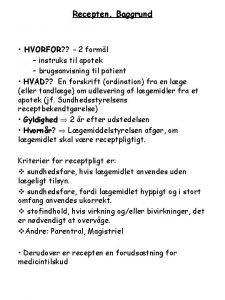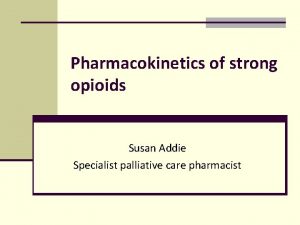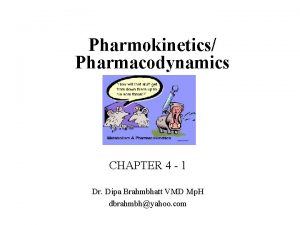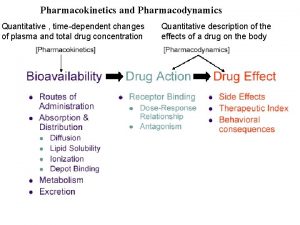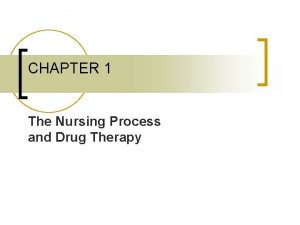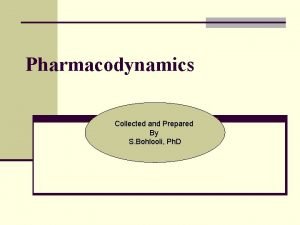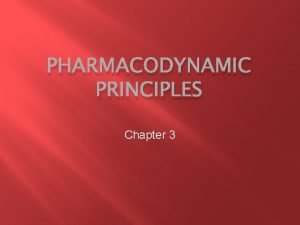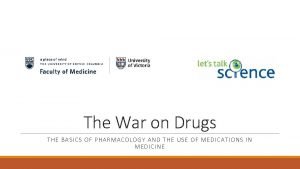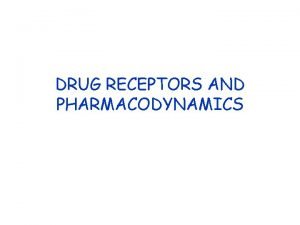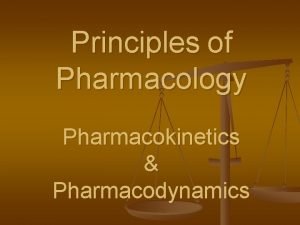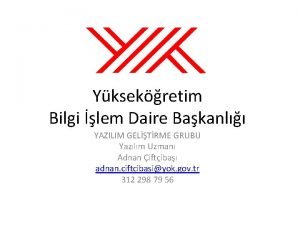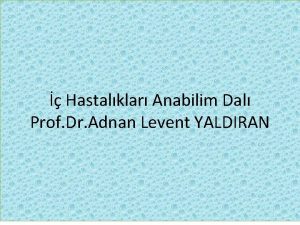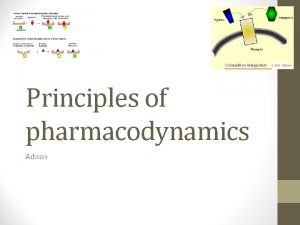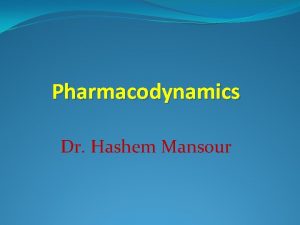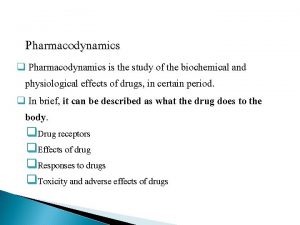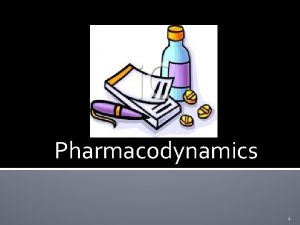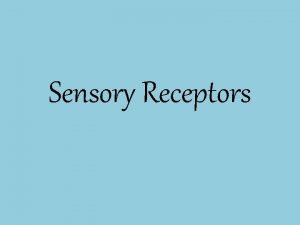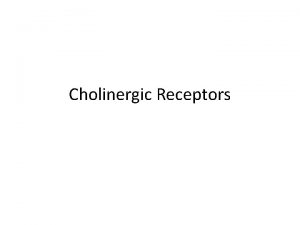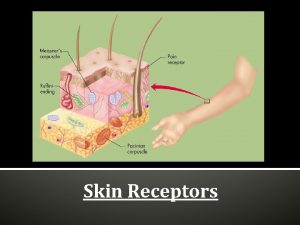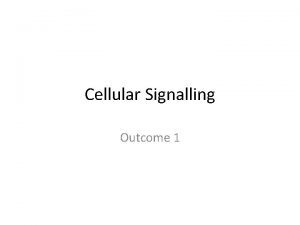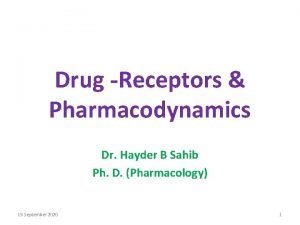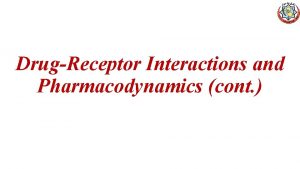Principles of pharmacodynamics Adnan Receptors Regulatory proteins receptors












- Slides: 12

Principles of pharmacodynamics Adnan

Receptors

Regulatory proteins – receptors drugs act on receptors as agonists or antagonists 1. Agonists bind to receptors and produce a responseeffects of various types 2. Antagonists bind to receptors without producing a response and by occupying the receptors they prevent action of agonists.


1. Agonists (cont. ) • Affinity - tendency to bind to the receptors (attraction between receptor and drug) • Efficacy - ability once bound, to initiate changes, which lead to effect (is the capacity of drug to activate a receptor) Full agonists - can produce maximal effect when all receptors are occupied (high efficacy) Partial agonists - can produce only submaximal effects even when all receptors are occupied


2. Antagonists • competitive antagonism antagonists are able to displace the agonists from the receptors (one drug can be displaced by another drug), may be abolished by adding an excess of agonist. a. reversible b. ireversible antagonist dissociates very slowly or not

2. Antagonists (cont. ) non-competitive antagonism a. form bonds with the receptors usually at sites other than the endogenous agent. b. in some cases binding may be covalent and ireversible c. cannot be overcom by higher concentration of agonist


effect Log-concentration-effect curve potency (affinity) efficacy slope of the curve 50% EC 50 10 -8 10 -7 10 -6 10 -5 10 -4 c

Drug A is more potent than Drug B, but both show the same efficacy. Biologic effect Typical doseresponse curve for drug showing differences in potency and efficacy. (EC 50 = drug dose that shows fifty percent of maximal response. ) Drug C shows lower potency and lower efficacy than Drugs A and B. 100 50 Drug A Drug B Drug C 0 Log drug concentration (according to Lippincott´s Pharmacology, 2006) EC 50 for Drug A EC 50 for Drug B Drug C

Therapeutic index The ratio of the dose that produces toxicity to the dose that produces a clinically desired or effective response in a population of individuals: Therapeutic index = LD 50/ED 50 or TD 50/ED 50 TD 50 = the dose that produces a toxic effect in half the population, LD 50 = the dose that produces a death in half the population ED 50 = the dose that produces a therapeutic or desired response in half the population. The therapeutic index = a measure of a drug's safety – a large value = there is a wide margin between doses that are effective and toxic.
 Pharmacodynamics
Pharmacodynamics Pharmacokinetic definition
Pharmacokinetic definition Pharmacodynamics
Pharmacodynamics Pharmacokinetics vs pharmacodynamics
Pharmacokinetics vs pharmacodynamics Define pharmacodynamics
Define pharmacodynamics Iontropic
Iontropic Pharmacodynamics
Pharmacodynamics Pharmacodynamics
Pharmacodynamics Therapeutic index definition
Therapeutic index definition Difference between pharmacodynamics and pharmacokinetics
Difference between pharmacodynamics and pharmacokinetics Adnan çiftçibaşı
Adnan çiftçibaşı Adnan levent yaldıran
Adnan levent yaldıran Adnan syed good qualities
Adnan syed good qualities
